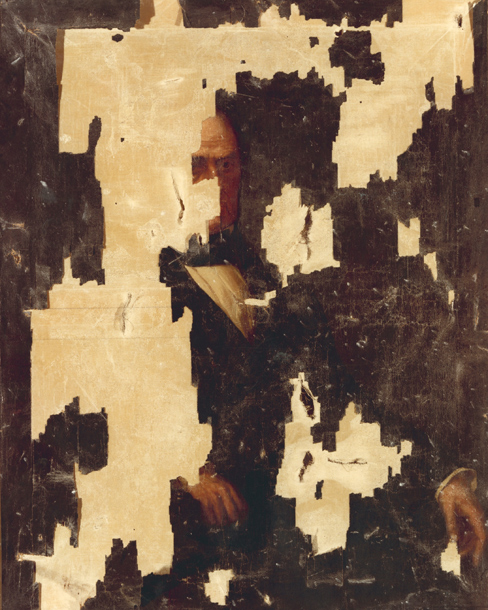If you were planning on seeing a Western Black Rhinoceros before you died, you're too late. According to the International Union for Conservation of Nature and Natural Resources, that particular Rhino has been declared extinct
In January 2013, the Fish and Wildlife Services reported 2,054 species worldwide that are endangered or threatened. 1,436 exist in the U.S. alone. Enjoy your day.
November 7, 1955 -
The neo-realist film classic, Umberto D., was released in the US on this date.
Many in the film's cast were new to acting, including Carlo Battisti and Maria Pia Casilio, the two principal actors. Others, including Umberto's cruel landlady, Antonia (Lina Gennari), were established professional actors.
November 7, 1956 -
An early masterpiece from Fellini, I Vitelloni, was released in the US on this date.
The role of 'Sergio Natali' was originally offered to the director, Vittorio de Sica. He politely declined as he was concerned that the character's homosexuality might mark the director himself as a homosexual.
November 7, 1963 -
The comedy that features one of the largest collections of American comedians ever brought together, It's a Mad Mad Mad Mad World, premiered on this date.
It became well known that Stanley Kramer was casting nearly every comedy performer he could think of. Some famous stars actually contacted Kramer to volunteer for the project, or to inquire as to why they had not been contacted. Stan Laurel turned down an invitation to appear in this film. When his partner Oliver Hardy died in 1957, Laurel pledged never to perform again. He never did.
November 7, 1979 -
Loosely based on the life of Janis Joplin, the film, The Rose, starring Bette Midler, was released on this date.
Ken Russell was offered the director's job but turned it down instead to direct Valentino. Russell later said that this decision was the biggest mistake of his career. Mark Rydell went on to direct the film.
Today in History:
Maria Sklodowski was born in Warsaw, Poland, on November 7, 1867. Poland was controlled by Russia at the time, so Maria was referred to as Manya, causing her mother to die. This left Manya and her four older siblings in care of their father, who was caught teaching Polish and therefore prohibited from earning money.
To help support her father, Manya began tutoring a family in the country outside Warsaw. Her sister Bronya moved to Paris to study medicine and become a famous doctor, so Manya sent money to her, also. This allowed Bronya to marry another medical student and begin practicing medicine in Paris.
Bronya and her husband invited Manya to live with them in Paris and study at the Sorbonne, where she could call herself Marie. This appealed to the young woman, who quickly earned master's degrees in physics and mathematics. She enjoyed Paris so much she couldn't bear to return to Poland and to understand her attraction to Paris she began a study of magnetism.
To conduct her magnetism research she needed a larger lab, however, so she married a Frenchman named Pierre and used his. One of Pierre's friends had been experimenting with uranium, which piqued Marie's curiosity. She began experimenting with it herself, and ultimately discovered something she called "radio-activity." This eventually led to her discovery of radium, for which she received the Nobel Prize for Chemistry in 1911.
Marie Curie's research would eventually culminate in the development of the atomic bomb, but unfortunately she died before having the opportunity to see the full flowering of her hard work.
November 7, 1872 -
The cargo ship Mary Celeste sailed from New York, never reaching Genoa. Four weeks later it is found completely abandoned, whereabouts of the ten man crew unknown.
The ship's cargo was alcohol, so you decide.
November 7, 1874 -
The famous political cartoonist Thomas Nast (a staunch Republican) first used an elephant to symbol for the Republican Party on this date.
He choice the elephant because of the animal's great size, intelligence, strength, and dignity.
November 7, 1940 -
The newly completed Tacoma Narrows Bridge, opened barely four months before, swayed and collapsed in a 42 mile-per-hour wind on this date.
There were no casualties except a dog trapped in a car stranded on the bridge. A rescue was attempted (by the man with the pipe), but the frightened animal would not leave the car.
November 7, 1965 -
The Pillsbury Doughboy made its first appearance on this date.
You may refer to the creature as "it"; marketing may call it a Doughboy but there is no evidence of genitalia.
November 7, 1983 -
An anonymous phone called notified the White House authorities that a bomb had been placed close to the Senate chamber by the "Armed Resistance Unit" and was set to explode. The Senate chamber was empty at the time, and nobody was injured.
The bomb did, however, cause about $250,000 in damage. Six "Resistance Conspiracy" members were arrested for the bombing five years later.
A portrait of Daniel Webster, received the explosion’s full force. The blast tore away Webster’s face and left it scattered across the Minton tiles in one-inch canvas shards. Quick thinking Senate curators rescued the fragments from debris-filled trash bins. Over the coming months, a capable conservator painstakingly restored the painting to a credible, if somewhat diminished, version of the original.
There are 22 days until Thanksgiving and the start of Hanukkah.
There are 48 days until Christmas.
And so it goes.






No comments:
Post a Comment